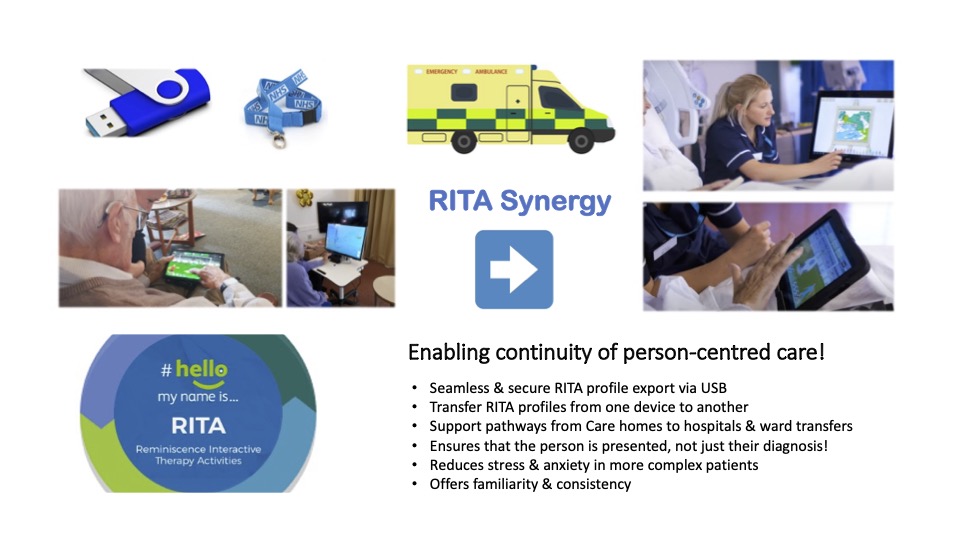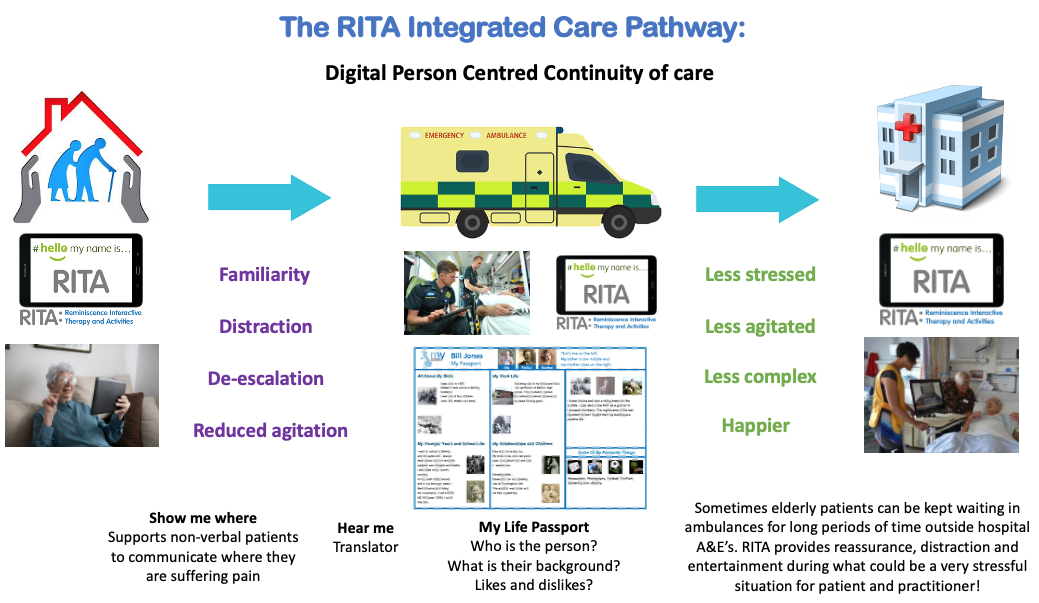RITA has been evidenced to significantly enhance the care delivered to patients in hospitals and residents in care homes. Outcomes such as reduced falls, reduced delayed transfers of care, reduced LoS, reduced use of PRN medication, not to mention a reduction in hospitals admissions have all been reported.
In many regions, RITA is used successfully in both hospital and care home settings. This presents an ideal opportunity to offer continuity of person centred care between primary and secondary care settings.
It is well documented that care home residents who are admitted in to hospital (electively or non electively), arrive very anxious and distressed. In many cases they can be aggressive and non compliant, which can frequently lead to unwarranted admissions, particularly from A&E. More complex patients such as those living with Dementia are prone to long stays in hospital and safeguarding incidents, which can then lead to delayed transfers of care. This is because they are unable to return to their residence due to escalations in behaviour whilst in hospital resulting in the need for an enhanced care package which their home is unable to accommodate.
What is RITA Synergy?
RITA Synergy is a simple mechanism to allow patients to take their RITA profile with them in to hospital. This will allow receiving organisations to upload the patients RITA profile in to their RITA's.
How does it work?
- Care homes will be supplied with a number of RITA USB devices with lanyards
- Residents profiles will be exported on to the USB device
- The device and profile will be password protected and encrypted with the residents own password
- The USB will travel with the resident to hospital. Either around the residents neck on the lanyard or by a member of staff
- The USB will be be shared with staff at hospital who can then import the profile in to their RITA
- This will allow staff to access personalised content within RITA for the individual. This will include:
- Their My Life passport containing a summary about the person, their likes and dislikes and their preferences
- Their favourite Music, images, TV clips etc with notes explaining why they mean something to them
- Their paintings and drawings
- Their photo's
- Their life story book
Infographics below explain more:


